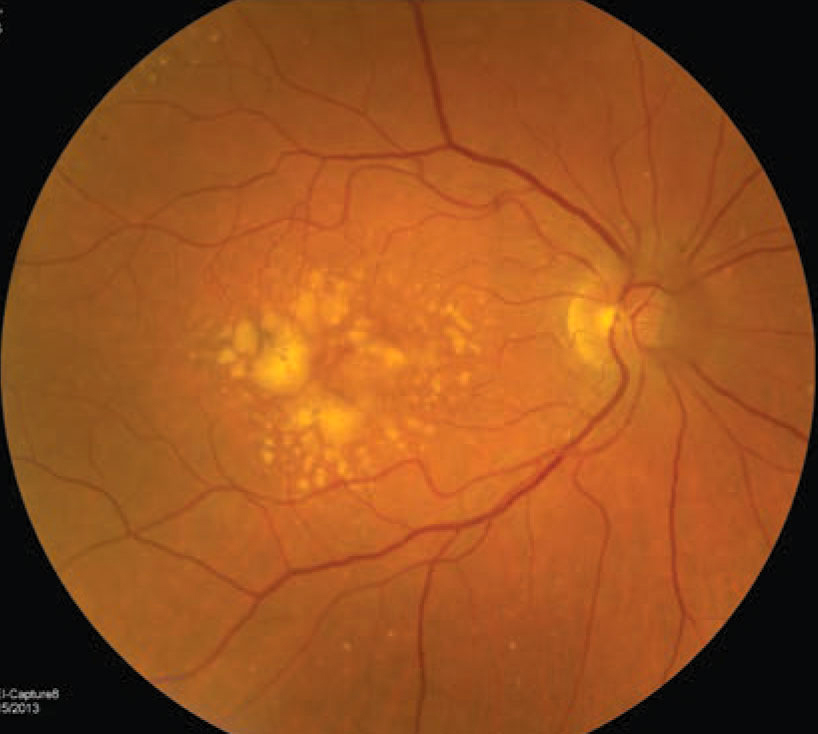 |
| In a small cohort, patients with drusenoid or serous PEDs had a dramatic reduction in vision as the PED was reabsorbed. An area of GA also occurred where the PED had previously been. Photo: NEI. Click image to enlarge. |
As therapeutics for geographic atrophy (GA) begin to hit the market, understanding how various clinical characteristics and comorbid conditions affect visual outcome and treatment response is of growing importance to clinicians. Subfoveal pigment epithelial detachment (PED) is one condition with a high prevalence in this patient population, leading researchers to investigate for the first time how reabsorption of various types of PEDs affects visual acuity (VA) and the occurrence and expansion rate of GA over time.
The small study, known as Geographic Atrophy after Reabsorption of Pigment Epithelial Detachment (GARPED), included 22 eyes from 19 patients who had absorption of a PED followed by GA. The average age of the cohort was 86.9 at reabsorption.
The researchers noted that, prior to reabsorption, the mean VA of the cohort was 20/80, which declined to 20/200 with an average follow-up of 30.2 months. After the initial VA loss following reabsorption, there was no further VA change observed. The average initial lesion size of GA was 0.99mm2 with an average growth rate of 0.27mm/year.
The study findings, which were recently published in BMC Ophthalmology, revealed that patients who started with “a drusenoid or serous PED have a dramatic reduction in vision as the PED is reabsorbed and an area of GA occurs where the PED was previously. Interestingly, this GA begins with the onset of a small lesion area and progresses at a slow rate of expansion.”
This clinical observation suggests that “patients with GA following PED reabsorption may not benefit from current treatments aimed at inhibiting the complement system,” the researchers explained in their paper. “This is due to the slow growth rate of GA over time in this GARPED study, which may not be mediated by the complement system and is possibly due to a mechanism of action distinct from typical GA progression.”
The authors concluded that future studies are warranted to further analyze the characteristics of the RPE, outer retinal layers and GA, along with reabsorption timing.
Peng ET, Adrean SD. Geographic Atrophy after Reabsorption of Pigment Epithelial Detachment (GARPED) study. BMC Ophthalmol. May 30, 2023. [Epub ahead of print]. |


